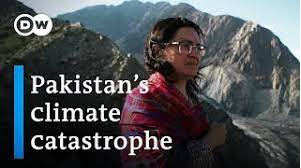By Inayat Amir
With the Himalayan glaciers melting faster than ever and water disputes deepening in tandem, the horrors of climate change are already on display in Pakistan, highlights a documentary.
The documentary has been made by Shehzad Hameed Ahmad, a freelance award-winning documentary filmmaker.
He goes undercover to film the water pilferage in Pakistan’s poorly planned and over-populated southern port city of Karachi before moving north to the high mountain areas of Gilgit-Baltistan to document the fast melting of the glaciers to fathom the chilling risks facing mountain communities.
The documentary has highlighted that glacial lakes around the Shisper glacier are ravaging village communities downstream at Hassanabad in Hunza District.
Rising heatwaves would melt the region’s ice sheet by 2100, putting the water and food security of nearly two billion people in danger.
Titled “Pakistan’s Himalayan Meltdown”, the documentary originally broadcast on Channel NewsAsia is now being aired on DW (Deutsche Welle), a German media outlet.
“The World Health Organisation puts the number of deaths from climate change at 250,000 by 2050. A combination of bad policies and political apathy is speeding up climate change,” read the description of the documentary.
It revolves around some of the most daunting questions of contemporary times pertaining to the future existence of this planet. Have we reached the tipping point? Is there a way out? What would climate-change-induced catastrophe look like?
Appreciating Pakistan’s bold initiative to plant billions of more trees to mitigate worsening climate change, it also questions whether it would be enough to take the bull by its horns?
The description further read, “The word Himalaya means House of Snow, and is the second-largest icecap outside the polar regions. But it is melting at the fastest rate in human history. One-third of the Himalayan glaciers are projected to disappear by the end of this century due to climate change.”
The documentary moves on to discover how water became a major flashpoint between arch-rivals — India and Pakistan — due to the Siachin glacier conflict.
Unprecedented flash floods, water scarcity, dying glaciers, abruptly changing weather patterns, rising cases of rare diseases, and climate-change-induced loss of natural habitat are some of the discernible symptoms that are already on display in the South Asian country.
Pakistan contributes less than one percent in global emissions but stands to be among the countries that are the most vulnerable to the effects of climate change and is home to over 7,000 of the world’s known glaciers being hit by rising temperatures.
The documentary ends by featuring activists trying to find ways to tackle the biggest issue of the 21st century.
Watch the full documentary: https://www.youtube.com/watch?v=I35Ma9KGY1E
Additional input from Deutsche Welle

Inayat Amir is a staff member of the High Asia Media Group.

